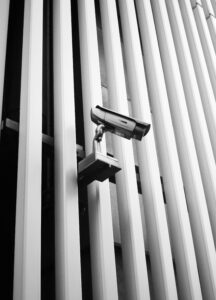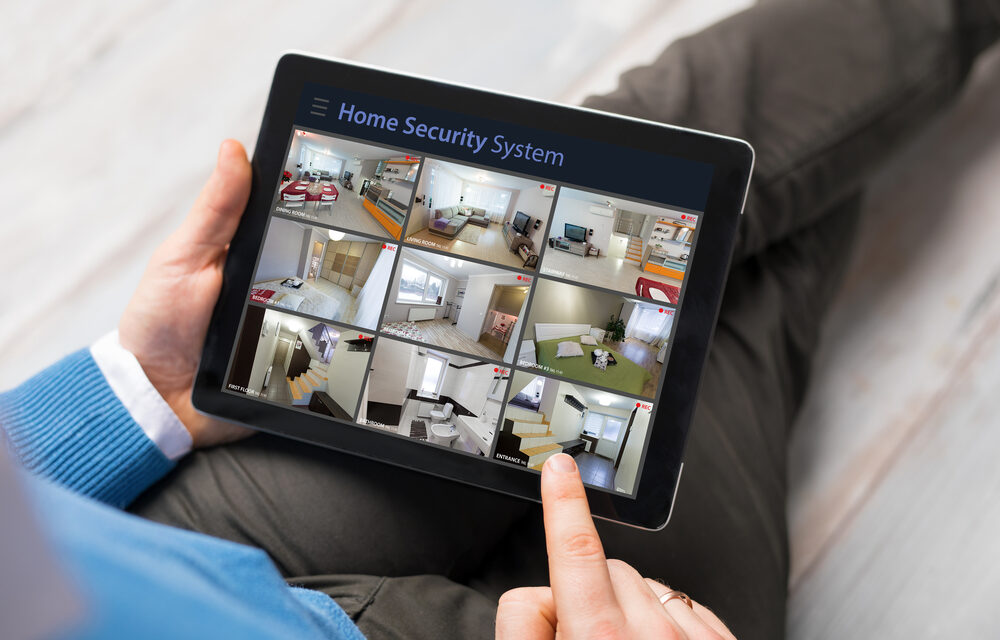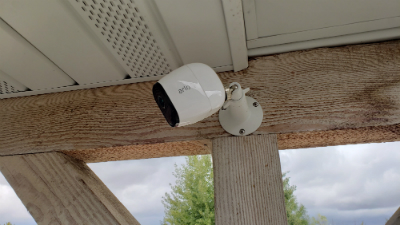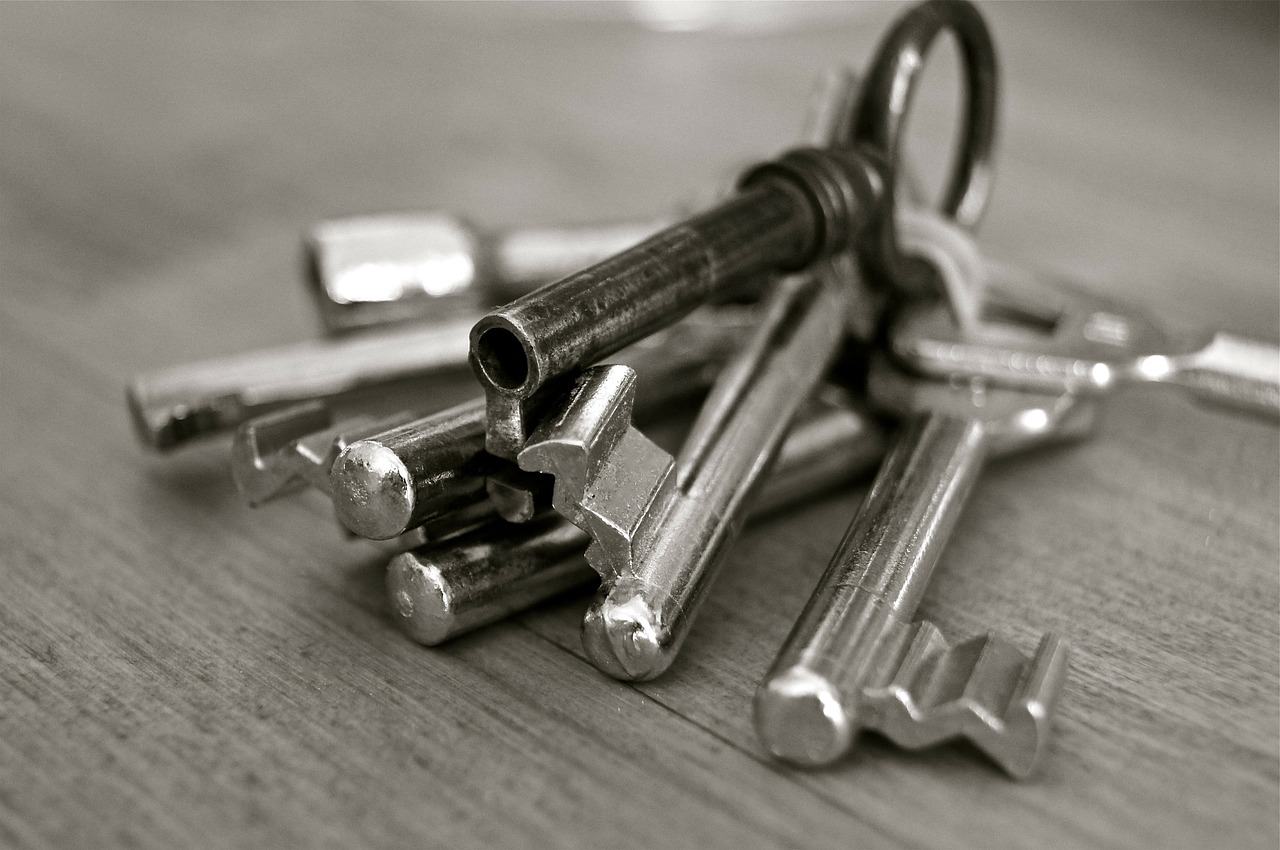As you are looking around trying to find home security systems that fit your bill, we need to keep in mind all the different options available to you. Your decision will be driven on how involved you want to be with the security system. Fully autonomous, or full manual control?
Some systems are pretty self-reliant. They run 24/7 with very little involvement from you, and they still notify you of threats when you need it. Other systems, typically the less expensive ones, require you to arm and disarm the system when it is convenient for you. If you leave home to go to the grocery store but forget to arm the security system, you could come back home to a ransacked house and no proof of who did it.
I want to help point you in the right direction and offer some advice that will help you decide what you really want out of a security system.

Home Security Systems – Overview
 To make sure that we are both on the same page here, I want to take notice to the differences between security systems. In an earlier article, Home Security Monitoring Companies, I started speaking towards the benefits of home security monitoring services. These types of systems utilize a third party company to monitor the security of your home in real time. They alert the authorities when an intruder is identified. The monitoring services also tie in to your smoke alarms so in the event of a fire. The fire crews are notified and dispatched right away. You can be rest assured your home will be taken care of while you are away to the grocery store or on vacation.
To make sure that we are both on the same page here, I want to take notice to the differences between security systems. In an earlier article, Home Security Monitoring Companies, I started speaking towards the benefits of home security monitoring services. These types of systems utilize a third party company to monitor the security of your home in real time. They alert the authorities when an intruder is identified. The monitoring services also tie in to your smoke alarms so in the event of a fire. The fire crews are notified and dispatched right away. You can be rest assured your home will be taken care of while you are away to the grocery store or on vacation.
When I speak to home security systems, I like to think of home security systems in three main levels:
- Inexpensive Systems – typically consist of mechanical devices that secure windows and doors with heavy-duty locks or simple noise alarms
- Home Security Alarm Systems – typically consist of cameras, door and window alarms, and software to bring all your feeds together with recording and motion sensing options that only alert you of a threat
- Home Security Monitoring Services – typically consist of ALL the above, with the added benefit of fire and water protection and dispatching of police and firemen when the system is triggered
Security companies are starting to expand their horizons and product lines to be more competitive, so these levels are starting to get blurred a bit. Companies now offer mix and match product services to meet your budgets if you can’t afford the full system. We could add another level and mention body guards for personal protection, but I believe that they:
- Draw too much attention to yourself
- Be out of most peoples budget
And there is nothing wrong with implementing ALL of these systems. In fact I recommend it. Any little thing you can do to beef up the safety of your home is a step well worth taking.
To Wire, or not to Wire
Wired Systems

It wasn’t too long ago that security systems only came with wired options. As you placed cameras around the perimeter of your home, you had the arduous task of routing the electrical power and data wires to each camera. This typically means sweating your butt off as you crawl through the tightest places in your attic while holding a drill so you can run wires to the outside of your house.
Most systems still utilize wired cameras to this day due to the added security and clarity/responsiveness of having wires. These wired systems have large hard drives that can be set to record 24/7 so you don’t miss a thing. You can set them up to only record on motion as well. Wired systems provide the best high resolution cameras and are very responsive. If you are away from home and need to view the front door, you can pull the feed from your smartphone quickly. Recharging batteries is non-existent with wired cameras. If your WiFi goes down, your cameras will keep on working.
The best benefit of wired systems, is that they are closed loop. This prevents hackers from obtaining your video feed. Last thing you want is somebody spying on you.
Wireless Systems
Wireless systems are now a hot item. They are super simple and quick to install and don’t require crawling through the attic. Battery technology, combined with smarter controlling software, enables these wireless cameras to last for weeks on end.
These systems are still limited in use. They do not record 24/7 like a wired system does to conserve battery life. And depending on the quality of your WiFi, or if you share a WiFi network, you won’t be able to read small details like license plate numbers on vehicles and such. Wireless cameras tend to be more affordable as there is much less hardware to deal with. Depending on the system, the cameras will record to an essentially unlimited cloud based service. You can access your videos from your smartphone. No overriding of hard drives to deal with.
Doorbell Cameras
Another hot item to consider is the doorbell cameras. When somebody rings this doorbell, or the camera senses motion, the camera immediately turns on. The app then sends you a notification that some one is at the door. Now some wireless camera systems I mentioned earlier have these same features, but these doorbell cameras are a standalone unit that is very affordable. You can identify the face of the person at the door and hold a two-way conversation with them in real time.
This gives you many benefits, especially in the case of the common porch thief we have seen become a trend the past few years. I have watched many videos of homeowners stopping package thieves from taking their Amazon boxes simply by calling them out! The doorbell camera senses motion and notifies the homeowner. As soon as the homeowner brings up the live feed, they can tell the thief to drop the package.
Some thieves will obviously just run away with the package, but at least you have the ability to be notified as soon as someone shows up.
Too Many Options
There have got to be thousands of systems to pick from out there, I have yet to count them all. With so many choices available, it can make picking the perfect solution quite impossible. Sometimes you may have to start small and work your way up. Start with a doorbell camera, and when money allows it, add on a few wireless cameras to the perimeter of the home. When you can finally afford the whole nine yards, get a monitoring service installed in your home. There is no reason you can’t keep your old systems in place either to use in conjunction with it, or re purpose it for somewhere else around the home.
The good news is, the small details like camera pixels and infrared range don’t matter like you think it would. Here is what you need to consider most:
- How it will fit in to your daily life (are you going to be proactive in arming the system regularly, or do you want it automated?)
- What are you comfortable installing? Look at contractor costs versus paying the installation cost of a monitoring service if you are not going to do it yourself.
- Understanding and operating the software through an app or computer. Some of these user interfaces are not user-friendly. Wireless systems tend to have a lot of lag bringing live feed up.
This will narrow your searches down quite a bit. If you don’t want to have to remember to charge your cameras once a month, you pretty much ruled out all wireless systems. Don’t let this stop you from investing in a wireless system though, as some systems do allow you to run full time power so you don’t have to run on battery only.
We will talk to all of these Home Security Systems
In the coming blog posts, I am going to start showing examples of what each of these levels look like, and we will dive in to the details of how they operate and the associated costs. My family and I invested in a wireless system for our home due to budgetary constraints, but I have installed wired systems in homes before, so I can tell you personally what I like best and what I hate the most in these systems. Hint: Wireless is the way to go.
Do you have any of these levels of security implemented already? How do you like it? Feel free to share your experiences below, I would love to hear them!






Thank you very much for this great post, We need to be cautious about our home security and put the right measures into right place. I think from the list I will surely go for the doorbell camera, it is less expensive and performs a good function. How can one hold a conversation with the intruder if caught by doorbell camera, You said it is a two way conversation but I don’t understand that part. Can you give more insights about that ?
Certainly! The doorbell camera has both a speaker and microphone built in to it, alongside the camera. You mount the doorbell camera next to the front door, typically where a normal doorbell would go. Most systems are wireless, some are wired. If you opt for the wireless version, you simply connect it to your wifi through a phone app. The doorbell camera will have an app you download on to your phone. From that app, you can view the doorbell camera, and there is a push to talk button that you can activate. Depending on your internet speeds, there may be lag in the conversation, but you will be able to speak with whoever is in front of the camera. The same way skype or video calls work! Ring, the company, is a popular doorbell camera company that is worth looking in to, along with Vivint, ADT, and SimpliSafe.
Hi Cody,
Thanks very much for this important presentation. It comes at a very opportune time, when we are reeling from the high crime rate that has been precipitated by the COVID-19 pandemic.
My questions:
On the issue of difficulty installing the systems and having to crawl through tight spaces, is that frequently a problem? I mean, in the parts of the world where I have lived, it has tended to be a responsibility of companies that deal with security systems to do the installation. Do people prefer DIY even for installing security systems? Is it that easy?
Do these security systems have a satisfactory warranty period of at least 12 months?
Cheers.
Great questions! You will find that a lot of the CCTV systems are still wired, and they are DIY systems. Most monitoring systems provided by a monthly service have updated to wireless systems to make installation easier for technicians, so crawling through attics has truly become a thing of the past. I do know Vivint offers the use of wires on their wireless cameras, but they only provide power to the camera in the event of a power outage. They would need to run wires wherever the home owner is comfortable with.
Regardless of the system you choose, it is relatively easy to setup. It boils down to time and your ability to set it up. Some people may be physically unable to setup a system, so purchasing a monitoring service that sends out a technician is your only choice.
Warranty’s vary by system, but the majority I have seen are 12 months from the date of purchase.
Thank you very much for your useful post. My husband and I have been talking about the need of having home security systems. Our own home and my parents home are vulnerable. I have a question about this. How do complete automation and video monitoring differ? Thank you in advance.
Hi Ann. The biggest difference at the end of the day is going to be the package costs. Most of the security companies base package is a fully automated monitoring service that detects for movement, broken windows, opened doors, anything that isn’t really supposed to be there. Video monitoring is an additional service on top of the complete automation, which adds to the cost of the service. Video monitoring gives you the added benefit of identifying the threat.